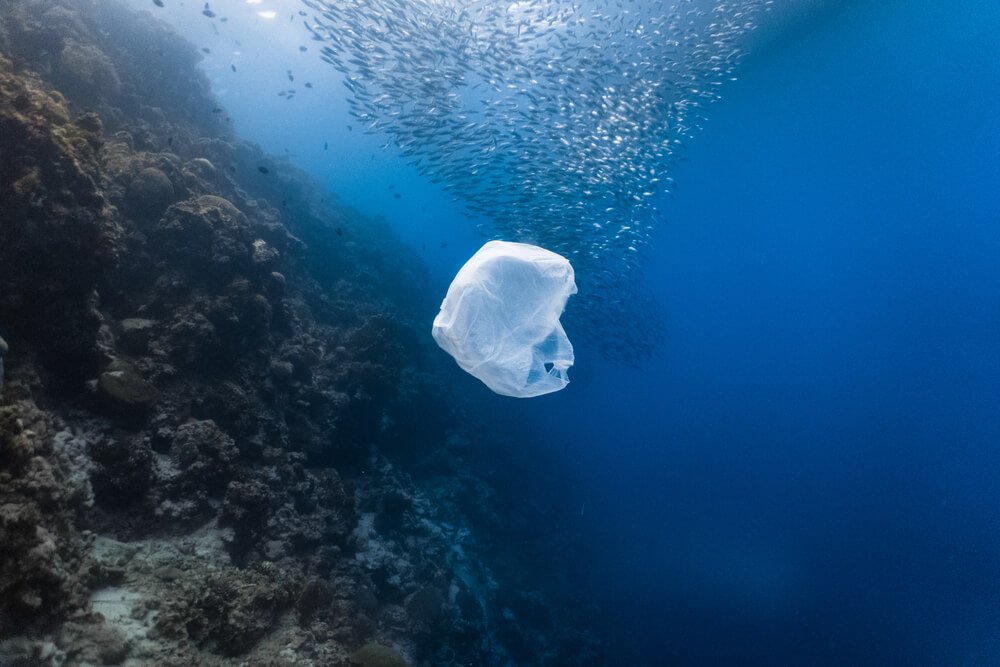Plastics Learning about biodegradable plastics is harder than you think.
Our minds have been wired to think positive about anything with the word ‘bio’ in it.
However, this is not always true, especially when it comes to plastic.
What is Biodegradable Plastic?
Biodegradable plastics are made from heavy oil that has different bases to give them the ability to degrade in the soil or are suited for certain composting conditions.
Some of these bases include:
- Cellulose
- Lignin
- Natural fibers
- Starch
- Bacteria
- Soy
Helping to break down the petroleum into lighter components, the structure of the molecules is changed into carbon and hydrogen chains.
Naphtha is another source used in restructuring hydrocarbon molecules.
Each bio-circular material has a separate quality of endurance, flexibility, and renewable qualities that give plastic an individual performance.
Popular Applications of Biodegradable Plastics
Biodegradable plastics are used in an assortment of short-term applications for enabling better degrading in soil or compost.
Some of these include:
- Organic waste collection
- Agricultural and horticultural sectors, such as plant pots
- Food packaging
- Disposable tableware
Concerns with Today’s Biodegradable Plastics
Biodegradable plastics were created to break down more quickly than plastics made from traditional petrochemicals.
However, biodegradable plastics are not the same as bioplastics or recycled plastics.
The word usage is often confused as one and the same, but the terms have entirely different meanings.
— Bioplastics are made from less harmful base ingredients, like corn starch, and are earmarked as Polylactide acid (PLA). Not only are they credited for breaking down easily, but improve the carbon dioxide gas in manufacturing. In fact, a 2017 study indicates that we could save as much as 25% in greenhouse emissions by switching to bioplastics.
— Recycled plastics are plastics that have been used to create lower-grade plastic items instead of throwing away spent plastics. While in theory this should be a win-win situation, many times the cost to recycle far outweighs the end result.
— Biodegradable plastics are a new phenomenon to the public by being advertised as environmentally friendly.
This term is strictly for marketing purposes and often fails to describe the actual end result.
Also called oxodegradable or PAC, or Pro-oxidant Additive Containing, most biodegradable plastics never completely break down in the presence of light and oxygen and often contains toxic residue from dyes.
While we are on the right track for improving the waste of plastic, much more needs to be done.
Continued Problems with Biodegradable Plastics
- Biodegradable plastics can cause methane gas when placed in landfills. This adds to global warming.
- Some biodegradable plastics and bioplastics don’t decompose as quickly as we are led to believe. Depending on the amount of ultraviolet light available, it could take years for breakdown to occur.
- Bioplastics and biodegradable plastics are not easy to recycle. Separating recyclable plastic from non-recyclable plastic is not a simple procedure. Only plastics marked PET (polyethylene terephthalate) is acceptable for recycling. However, PLA plastics or biodegradable plastics are very close in looks. If the two get mixed up at the recycling center, the entire batch has to be thrown out.
- While bioplastics and biodegradable plastics do have an impact on cutting back on staying out of landfills and oceans, farmland is another problem. The friendlier bases, such as soy and corn oil have to be grown. Concentrating on plastic additives as opposed to growing much-needed food takes away from crops in our limited farm ground.
- GM (genetically modified) crops have come under fire lately due to being harmful to the environment. Genetically modified crops are a popular type of base for making PLA for biodegradable plastics. This additive could be a problem in the future.
- Many people believe terms like “bioplastic,” “biodegradable,” and “recyclable” mean the same thing in bringing relief to our planet. You can see that it is quite confusing in trying to make the best choice possible from reading the pros and cons of what each one actually means.
Public understanding is an important factor in keeping global warming, plastic waste, and recycling clear.
The easiest way to prevent plastic waste from building up is to avoid the use of plastic altogether.
We have evolved into a “throw-away” society where trash is someone else’s problem.
This is no longer true and the responsibility lies with us.
In some cases, it is okay to use bioplastics or recycled products, but biodegradable plastics have a long way to go before being referred to as “earth-friendly.” Shopping bags are one of the leading causes of plastic trash.
Consider using cloth shopping bags or clearly marked PET containers.
Ask yourself what disposable really means and try to get the most of the life out of each plastic product you buy.
The world will not cure itself without a little consideration from the public sector.


